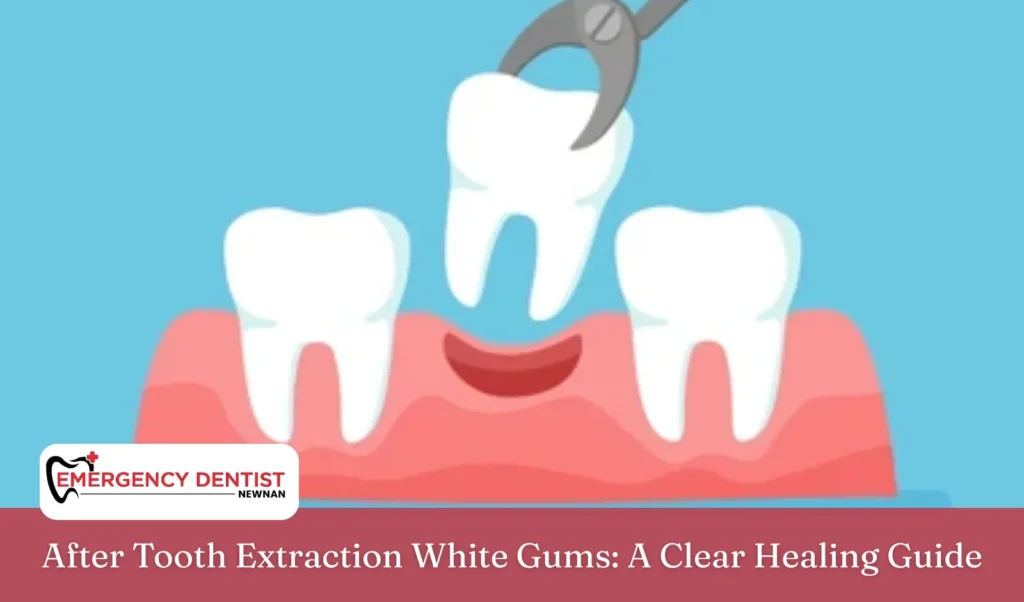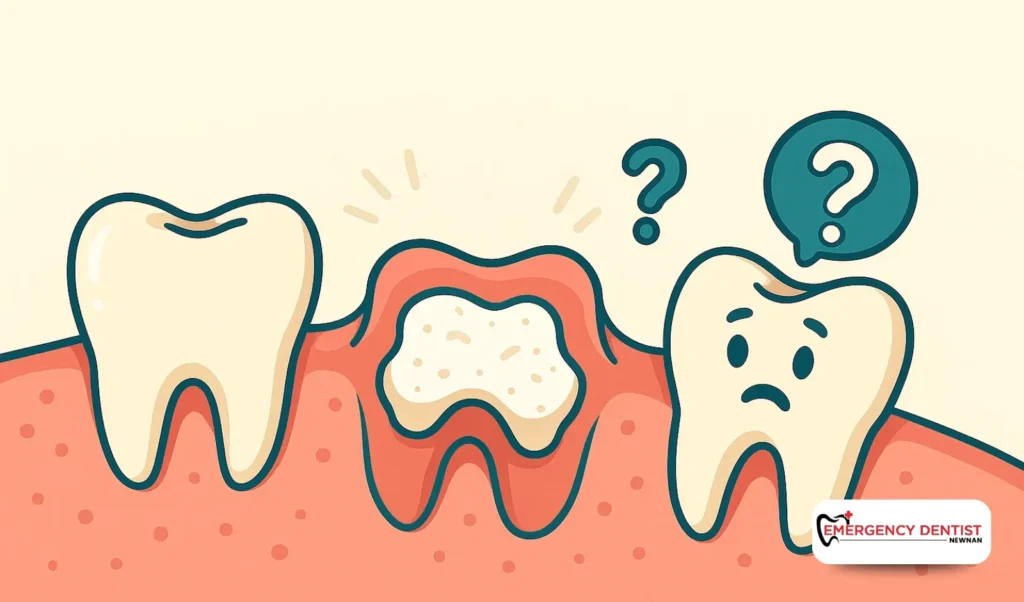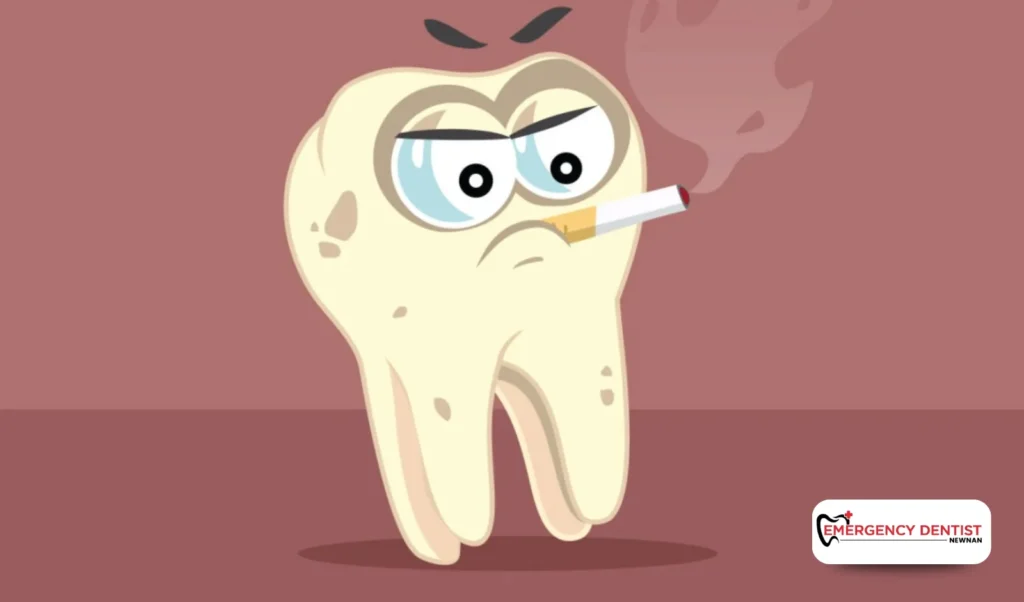After Tooth Extraction White Gums: A Clear Healing Guide

After tooth extraction, white gums can cause concern for many patients. Whether you’ve had a tooth pulled or your wisdom teeth removed, seeing white tissue, patches, or a pale coating inside the tooth extraction site may feel alarming. Fortunately, in most cases, white gums after tooth extraction are simply part of the healing process. Still, it’s important to know how to recognize the difference between normal healing and warning signs of complications like infection or dry socket.
Why White Gums After Tooth Extraction Appear
Once a tooth is pulled, your body begins healing almost immediately. Within minutes, a blood clot forms inside the tooth extraction site. This clot acts as a protective covering, shielding the bone and nerves underneath. As the days pass, you may notice after tooth extraction white gums or white stuff inside the socket.
This is usually granulation tissue, which consists of collagen, new gum tissue, and white blood cells. It also receives support from blood vessels delivering nutrients to the area. This tissue is part of the healing process and shows your body is repairing itself.
Normal Healing Process

White gums after tooth extraction are often a reassuring sign that things are healing properly. Here’s what’s happening below the surface:
- Blood clots form to protect the wound.
- White blood cells fight off bacteria to prevent infection.
- Blood vessels supply oxygen and nutrients.
- Gum tissue begins to rebuild and fill the socket.
It’s common to see a whitish coating within the first week after your tooth is pulled. If wisdom teeth were removed, the sockets tend to be larger, so these white patches may look more noticeable. Healing timelines vary, but for most patients this stage lasts from several days up to a few weeks, depending on the complexity of the procedure and overall health.
When White Gums May Signal a Problem

Not all white gums after tooth extraction are harmless. Sometimes, they may suggest complications such as:
- Infection or dry socket: Severe pain, swelling, foul odor, or pus could indicate infection or dry sockets forming.
- Food debris: White stuff may simply be particles of food trapped inside the site, which can slow down healing if not rinsed out carefully.
- Dislodged blood clot: If you accidentally dislodge the blood clot, the sensitive bone and nerves become exposed, leading to painful dry socket that requires urgent care.
At-Home Care for Smooth Healing
To keep your recovery on track and help your gum tissue heal properly, follow these steps:
- Gently rinse your mouth with warm salt water after the first 24 hours to keep the area clean without washing away the clot.
- Eat soft foods like yogurt, mashed potatoes, or soup so chewing doesn’t disturb the tooth extraction site.
- Avoid smoking and straws, as the sucking motion can dislodge the blood clot.
- Practice gentle oral hygiene by brushing carefully around the extraction site to prevent infection.
These small habits help ensure the white gums you notice are part of normal recovery and not a sign of trouble.
When to Call a Professional
Although white gums after tooth extraction are usually a healthy part of healing, you should seek professional help if you notice:
- Severe or worsening pain a few days after your tooth is pulled.
- Persistent bad breath or unpleasant taste.
- Bleeding that does not stop.
- Visible bone and nerves at the tooth extraction site.
These symptoms may indicate infection or dry socket, both of which require immediate treatment. Contacting an Emergency Dentist in Newnan quickly can save you from prolonged discomfort and complications.
Conclusion
Seeing white gums after tooth extraction is often no reason to panic. The white layer is usually granulation tissue, along with white blood cells and gum tissue working together to protect the bone and nerves beneath. However, it’s important to remain cautious. If you accidentally dislodge the blood clot or if food debris collects in the site, you could develop dry sockets or other complications.
With proper aftercare, rinsing with warm salt water, eating soft foods, and protecting the clot, you can expect the gums to heal properly and return to their normal pink shade. If you suspect infection or dry socket, don’t hesitate to call an Emergency Dentist in Newnan for expert care.
Frequently Asked Questions
Is it normal to observe white gums after a tooth extraction?
Yes. White gums are generally granulation tissue, which is a natural stage of tooth extraction healing. It indicates that the area is recovering properly.
How can I distinguish between normal healing and an infection?
If discomfort lessens each day, the site is most likely healing properly. However, swelling, pus, foul odor, or worsening pain may indicate infection or dry socket.
What measures can be taken to prevent the development of a dry socket?
To protect the blood clot during tooth extraction healing, avoid smoking and the use of straws, consume soft foods, and rinse your mouth gently with warm salt water.



